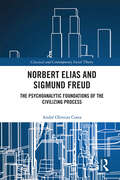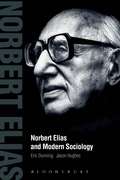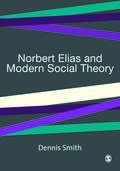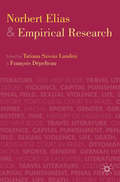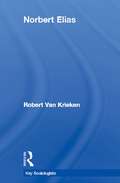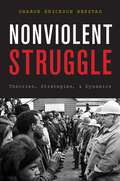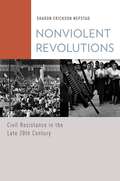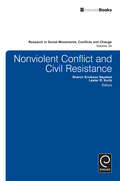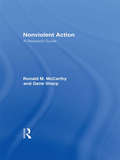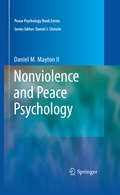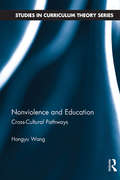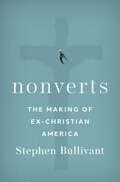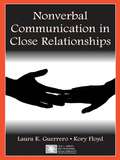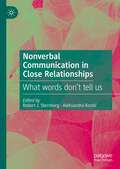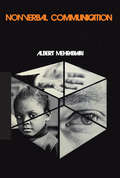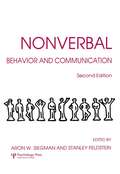- Table View
- List View
Norbert Elias and Sigmund Freud: The Psychoanalytic Foundations of the Civilizing Process (Classical and Contemporary Social Theory)
by André Oliveira CostaThis book explores the influence of Freudian psychoanalysis on Norbert Elias’ theory of the civilizing process – an influence acknowledged by Elias himself – conducting a dialogue with a view to analyzing points of contact and distance between them. Examining the development of Elias’ work, it sheds light on the integration of psychoanalytic concepts in his thought, considering the dynamics that exist between individuals and social processes, as the civilizing process affects the psychic economy of individuals and psychic structures serve to sustain civilization. A genealogical study of Freudian concepts as expressed in the trajectory of Elias’s sociology, it will appeal to scholars of sociology and psychology with interests in social and psychoanalytic theory.
Norbert Elias and Modern Sociology: Knowledge, Interdependence, Power, Process
by Eric Dunning Jason HughesThis book explores the interplay between the making of Elias as a sociologist and the development of his core ideas relating to figurations, interdependence, and civilising processes. Focusing on the relevance of Elias's work for current debates within sociology, the authors centrally consider his contributions to the sociology of knowledge and methodology. Dunning and Hughes locate the work of Elias within a discussion of the crisis of sociology as a subject, and compare his figurational approach with the approaches of three major figures in modern sociology: Anthony Giddens, Michel Foucault and Pierre Bourdieu. This highly readable and engaging book will be essential reading for students and scholars of sociological theory and methods.
Norbert Elias and Modern Social Theory (PDF)
by Dennis SmithOffering a fascinating survey of Norbert Elias's life and writings, Dennis Smith traces the growth of his reputation. He is the first author to confront Elias's work with the contrasting theories of Talcott Parsons, Hannah Arendt, Michel Foucault and Zygmunt Bauman. He also illustrates how Elias's insights can be applied to understand Western modernity and social and political change. Smith shows why Elias is important for sociology, but he is also clear sighted about the limitations of Elias's approach.
Norbert Elias and Empirical Research
by Fran�ois D�pelteau Tatiana Savoia LandiniNorbert Elias has been recognized as one of the key social scientists of the 20th century at least in sociology, political science and history. This book will address Norbert Elias's approach to empirical research, the use of his work in empirical research, and compare him with other theorists.
Norbert Elias
by Robert Van KriekenThis book locates Elias's work clearly within the development of sociology and also against the background of current debates.Between the 1930s and the 1980s he developed a unique approach to social theory which is now beginning to take root in contemporary social research and theory. Since the translation of his work into English began to accelerate in the 1980s, a growing number of books and articles on topics including health, sexuality, crime, national and ethnic identity, femininity and globalization, in a variety of disciplines, make positive reference to Elias as an authority on the history of emotions, identity, violence, the body and state formation.
Norbert Elias
by Robert Van KriekenThis book locates Elias's work clearly within the development of sociology and also against the background of current debates.Between the 1930s and the 1980s he developed a unique approach to social theory which is now beginning to take root in contemporary social research and theory. Since the translation of his work into English began to accelerate in the 1980s, a growing number of books and articles on topics including health, sexuality, crime, national and ethnic identity, femininity and globalization, in a variety of disciplines, make positive reference to Elias as an authority on the history of emotions, identity, violence, the body and state formation.
NONVIOLENT STRUGGLE C: Theories, Strategies, and Dynamics
by Sharon Erickson NepstadFrom Gandhi's movement to win Indian independence to the Arab Spring uprisings of 2011, an expanding number of citizens have used nonviolent action to win political goals. While such events have captured the public imagination, they have also generated a new surge of scholarly interest in the field of nonviolence and civil resistance studies. Although researchers have produced new empirical data, theories, and insights into the phenomenon of nonviolent struggle, the field is still quite unfamiliar to many students and scholars. In Nonviolent Struggle: Theories, Strategies, and Dynamics, sociologist Sharon Nepstad provides a succinct introduction to the field of civil resistance studies, detailing its genesis, key concepts and debates, and a summary of empirical findings. Nepstad depicts the strategies and dynamics at play in nonviolent struggles, and analyzes the factors that shape the trajectory and outcome of civil resistance movements. The book draws on a vast array of historical examples, including the U.S. civil rights movement, the Indonesian uprising against President Suharto, the French Huguenot resistance during World War II, and Cesar Chavez's United Farm Workers. Nepstad describes both principled and pragmatic nonviolent traditions and explains various categories of nonviolent action, concluding with an assessment of areas for future research. A comprehensive treatment of the philosophy and strategy of nonviolent resistance, Nonviolent Struggle is essential reading for students, scholars, and anyone with a general interest in peace studies and social change.
Nonviolent Struggle: Theories, Strategies, and Dynamics
by Sharon Erickson NepstadFrom Gandhi's movement to win Indian independence to the Arab Spring uprisings of 2011, an expanding number of citizens have used nonviolent action to win political goals. While such events have captured the public imagination, they have also generated a new surge of scholarly interest in the field of nonviolence and civil resistance studies. Although researchers have produced new empirical data, theories, and insights into the phenomenon of nonviolent struggle, the field is still quite unfamiliar to many students and scholars. In Nonviolent Struggle: Theories, Strategies, and Dynamics, sociologist Sharon Nepstad provides a succinct introduction to the field of civil resistance studies, detailing its genesis, key concepts and debates, and a summary of empirical findings. Nepstad depicts the strategies and dynamics at play in nonviolent struggles, and analyzes the factors that shape the trajectory and outcome of civil resistance movements. The book draws on a vast array of historical examples, including the U.S. civil rights movement, the Indonesian uprising against President Suharto, the French Huguenot resistance during World War II, and Cesar Chavez's United Farm Workers. Nepstad describes both principled and pragmatic nonviolent traditions and explains various categories of nonviolent action, concluding with an assessment of areas for future research. A comprehensive treatment of the philosophy and strategy of nonviolent resistance, Nonviolent Struggle is essential reading for students, scholars, and anyone with a general interest in peace studies and social change.
Nonviolent Revolutions: Civil Resistance in the Late 20th Century (Oxford Studies in Culture and Politics)
by Sharon Erickson NepstadIn the spring of 1989, Chinese workers and students captured global attention as they occupied Tiananmen Square, demanded political change, and were tragically suppressed by the Chinese army. Months later, East German civilians rose up nonviolently, brought down the Berlin Wall, and dismantled their regime. Although both movements used tactics of civil resistance, their outcomes were different. Why? In Nonviolent Revolutions, Sharon Erickson Nepstad examines these and other uprisings in Panama, Chile, Kenya, and the Philippines. Taking a comparative approach that includes both successful and failed cases of nonviolent resistance, Nepstad analyzes the effects of movements' strategies along with the counter-strategies regimes developed to retain power. She shows that a significant influence on revolutionary outcomes is security force defections, and explores the reasons why soldiers defect or remain loyal and the conditions that increase the likelihood of mutiny. She then examines the impact of international sanctions, finding that they can at times harm movements by generating new allies for authoritarian leaders or by shifting the locus of power from local civil resisters to international actors. Nonviolent Revolutions offers essential insights into the challenges that civil resisters face and elucidates why some of these movements failed. With a recent surge of popular uprisings across the Middle East, this book provides a valuable new understanding of the dynamics and potency of civil resistance and nonviolent revolt.
Nonviolent Revolutions: Civil Resistance in the Late 20th Century (Oxford Studies in Culture and Politics)
by Sharon Erickson NepstadIn the spring of 1989, Chinese workers and students captured global attention as they occupied Tiananmen Square, demanded political change, and were tragically suppressed by the Chinese army. Months later, East German civilians rose up nonviolently, brought down the Berlin Wall, and dismantled their regime. Although both movements used tactics of civil resistance, their outcomes were different. Why? In Nonviolent Revolutions, Sharon Erickson Nepstad examines these and other uprisings in Panama, Chile, Kenya, and the Philippines. Taking a comparative approach that includes both successful and failed cases of nonviolent resistance, Nepstad analyzes the effects of movements' strategies along with the counter-strategies regimes developed to retain power. She shows that a significant influence on revolutionary outcomes is security force defections, and explores the reasons why soldiers defect or remain loyal and the conditions that increase the likelihood of mutiny. She then examines the impact of international sanctions, finding that they can at times harm movements by generating new allies for authoritarian leaders or by shifting the locus of power from local civil resisters to international actors. Nonviolent Revolutions offers essential insights into the challenges that civil resisters face and elucidates why some of these movements failed. With a recent surge of popular uprisings across the Middle East, this book provides a valuable new understanding of the dynamics and potency of civil resistance and nonviolent revolt.
Nonviolent Conflict and Civil Resistance (Research in Social Movements, Conflicts and Change #34)
by Sharon Erickson Nepstead Lester R. KurtzThis volume of Research in Social Movements, Conflicts and Change analyzes examples of nonviolent resistance from across the globe. It covers how regime changes, political movements and nonviolent unrest develop and then shape the political decisions of both civil society and the state. Section one is focused on the strategic interactions between nonviolent movements and the state. This includes discussions on the civil rights movement in Northern Ireland, youth movements in Post-Communist states and nonviolent Islamic movements in Turkey. The second and third sections examine regime conflicts and the global diffusion of nonviolent movements. Here chapters center on the Iranian Revolution, social psychological approaches to nonviolent civil resistance, the Palestinian human rights movements, the efforts of nonviolent INGOs and the Nashville civil rights movement. This volume introduces new analytical concepts and theoretical frameworks for understanding nonviolent resistance, merging social movement scholarship with nonviolent studies in fresh and exciting ways.
Nonviolent Action: A Research Guide
by Gene Sharp Ronald M. McCarthy Brad BennettFirst published in 1998. Routledge is an imprint of Taylor & Francis, an informa company.
Nonviolent Action: A Research Guide (History Reference Ser.)
by Gene Sharp Ronald M. McCarthy Brad BennettFirst published in 1998. Routledge is an imprint of Taylor & Francis, an informa company.
Nonviolence and Peace Psychology: Intrapersonal, Interpersonal, Societal, And World Peace (Peace Psychology Book Series)
by Daniel MaytonRecent trends and events worldwide have increased public interest in nonviolence, pacifism, and peace psychology as well as professional interest across the social sciences. Nonviolence and Peace Psychology assembles multiple perspectives to create a more comprehensive and nuanced understanding of the concepts and phenomena of nonviolence than is usually seen on the subject. Through this diverse literature—spanning psychology, political science, religious studies, anthropology, and sociology—peace psychologist Dan Mayton gives readers the opportunity to view nonviolence as a body of principles, a system of pragmatics, and a strategy for social change. This important volume: Draws critical distinctions between nonviolence, pacifism, and related concepts. Classifies nonviolence in terms of its scope (intrapersonal, interpersonal, societal, global) and pacifism according to political and situational dimensions. Applies standard psychological concepts such as beliefs, motives, dispositions, and values to define nonviolent actions and behaviors. Brings sociohistorical and cross-cultural context to peace psychology. Analyzes a century’s worth of nonviolent social action, from the pathbreaking work of Gandhi and King to the Courage to Refuse movement within the Israeli armed forces. Reviews methodological and measurement issues in nonviolence research, and suggests areas for future study. Although more attention is traditionally devoted to violence and aggression within the social sciences, Nonviolence and Peace Psychology reveals a robust knowledge base and a framework for peacebuilding work, granting peace psychologists, activists, and mediators new possibilities for the transformative power of nonviolence.
Nonviolence and Education: Cross-Cultural Pathways (Studies in Curriculum Theory Series)
by Hongyu WangIn current global politics, which positions China as a competitor to American leadership, in-depth understandings of transnational mutual engagement are much needed for cultivating nonviolent relations. Exploring American and Chinese professors’ experiences at the intersection of the individual, society, and history, and weaving the autobiographical and the global, this book furthers understanding of their cross-cultural personal awareness and educational work at universities in both countries. While focusing on life histories, it also draws on both American and Chinese intellectual traditions such as American nonviolence activism, Taoism, and Buddhism to formulate a vision of nonviolence in curriculum studies. Centering cross-cultural education and pedagogy about, for, and through nonviolence, this volume contributes to internationalizing curriculum studies and introduces curriculum theorizing at the level of higher education. Hongyu Wang brings together stories, dialogues, and juxtapositions of cross-cultural pathways and pedagogies in a powerful case for theorizing and performing nonviolence education as visionary work in the internationalization of curriculum studies.
Nonviolence and Education: Cross-Cultural Pathways (Studies in Curriculum Theory Series)
by Hongyu WangIn current global politics, which positions China as a competitor to American leadership, in-depth understandings of transnational mutual engagement are much needed for cultivating nonviolent relations. Exploring American and Chinese professors’ experiences at the intersection of the individual, society, and history, and weaving the autobiographical and the global, this book furthers understanding of their cross-cultural personal awareness and educational work at universities in both countries. While focusing on life histories, it also draws on both American and Chinese intellectual traditions such as American nonviolence activism, Taoism, and Buddhism to formulate a vision of nonviolence in curriculum studies. Centering cross-cultural education and pedagogy about, for, and through nonviolence, this volume contributes to internationalizing curriculum studies and introduces curriculum theorizing at the level of higher education. Hongyu Wang brings together stories, dialogues, and juxtapositions of cross-cultural pathways and pedagogies in a powerful case for theorizing and performing nonviolence education as visionary work in the internationalization of curriculum studies.
Nonverts: The Making of Ex-Christian America
by Stephen BullivantAn entertaining and insightful exploration of the American ex-religious The United States is in the midst of a religious revolution. Or, perhaps it is better to say a non-religious revolution. Around a quarter of US adults now say they have no religion. The great majority of these religious "nones" also say that they used to belong to a religion but no longer do. These are the nonverts: think "converts," but from having religion to having none. There are currently has about 59 million of them in the United States. Nonverts explores who they are, and why they joined the rising tide of the ex-religious. One of world's leading experts on contemporary atheism and nonreligiosity, sociologist and theologian Stephen Bullivant draws on dozens of interviews, original analysis of high-quality survey data, and a wealth of cutting-edge studies, to present an entertaining and insightful exploration of America's ex-religious landscape. Bullivant criss-crosses the country, talking to everyone from ex-Mormons in Utah to ex-Catholics in Pennsylvania, from ex-Evangelicals in Georgia to ex-Muslims in California, showing not only what they have in common but also how the traditions they left behind continue to shape them. While American religion is not going to die out any time soon, ex-Christian America is a growing presence in national life. America's religious revolution is not just a religious revolution--it is catalyzing a profound social, cultural, moral, and political impact. Nonverts will serve as an indispensable guide to this shifting landscape, as well as the future of American life.
Nonverts: The Making of Ex-Christian America
by Stephen BullivantAn entertaining and insightful exploration of the American ex-religious The United States is in the midst of a religious revolution. Or, perhaps it is better to say a non-religious revolution. Around a quarter of US adults now say they have no religion. The great majority of these religious "nones" also say that they used to belong to a religion but no longer do. These are the nonverts: think "converts," but from having religion to having none. There are currently has about 59 million of them in the United States. Nonverts explores who they are, and why they joined the rising tide of the ex-religious. One of world's leading experts on contemporary atheism and nonreligiosity, sociologist and theologian Stephen Bullivant draws on dozens of interviews, original analysis of high-quality survey data, and a wealth of cutting-edge studies, to present an entertaining and insightful exploration of America's ex-religious landscape. Bullivant criss-crosses the country, talking to everyone from ex-Mormons in Utah to ex-Catholics in Pennsylvania, from ex-Evangelicals in Georgia to ex-Muslims in California, showing not only what they have in common but also how the traditions they left behind continue to shape them. While American religion is not going to die out any time soon, ex-Christian America is a growing presence in national life. America's religious revolution is not just a religious revolution--it is catalyzing a profound social, cultural, moral, and political impact. Nonverts will serve as an indispensable guide to this shifting landscape, as well as the future of American life.
Nonverbal Communication in Close Relationships
by Laura K. Guerrero Kory FloydNonverbal Communication in Close Relationships provides a synthesis of research on nonverbal communication as it applies to interpersonal interaction, focusing on the close relationships of friends, family, and romantic partners. Authors Laura K. Guerrero and Kory Floyd support the premise that nonverbal communication is a product of biology, social learning, and relational context. They overview six prominent nonverbal theories and show how each is related to bio-evolutionary or sociocultural perspectives. Their work focuses on various functions of nonverbal communication, emphasizing those that are most relevant to the initiation, maintenance, and dissolution of close relationships. Throughout the book, Guerrero and Floyd highlight areas where research is either contradictory or inconclusive, hoping that in the years to come scholars will have a clearer understanding of these issues. The volume concludes with a discussion of practical implications that emerge from the scholarly literature on nonverbal communication in relationships – an essential component for understanding relationships in the real world. Nonverbal Communication in Close Relationships makes an important contribution to the development of our understanding not only of relationship processes but also of the specific workings of nonverbal communication. It will serve as a springboard for asking new questions and advancing new theories about nonverbal communication. It is intended for scholars and advanced students in personal relationship study, social psychology, interpersonal communication, nonverbal communication, family studies, and family communication. It will also be a helpful resource for researchers, clinicians, and couples searching for a better understanding of the complicated roles that nonverbal cues play in relationships.
Nonverbal Communication in Close Relationships
by Laura K. Guerrero Kory FloydNonverbal Communication in Close Relationships provides a synthesis of research on nonverbal communication as it applies to interpersonal interaction, focusing on the close relationships of friends, family, and romantic partners. Authors Laura K. Guerrero and Kory Floyd support the premise that nonverbal communication is a product of biology, social learning, and relational context. They overview six prominent nonverbal theories and show how each is related to bio-evolutionary or sociocultural perspectives. Their work focuses on various functions of nonverbal communication, emphasizing those that are most relevant to the initiation, maintenance, and dissolution of close relationships. Throughout the book, Guerrero and Floyd highlight areas where research is either contradictory or inconclusive, hoping that in the years to come scholars will have a clearer understanding of these issues. The volume concludes with a discussion of practical implications that emerge from the scholarly literature on nonverbal communication in relationships – an essential component for understanding relationships in the real world. Nonverbal Communication in Close Relationships makes an important contribution to the development of our understanding not only of relationship processes but also of the specific workings of nonverbal communication. It will serve as a springboard for asking new questions and advancing new theories about nonverbal communication. It is intended for scholars and advanced students in personal relationship study, social psychology, interpersonal communication, nonverbal communication, family studies, and family communication. It will also be a helpful resource for researchers, clinicians, and couples searching for a better understanding of the complicated roles that nonverbal cues play in relationships.
Nonverbal Communication in Close Relationships: What words don’t tell us
by Robert J. Sternberg Aleksandra KostićThis book is an up-to-date compendium of knowledge on the secret language of close relationships, namely nonverbal routes of communication. In close relationships, as everyone learns sooner or later, the usefulness of words can be somewhat limited, because people (a) mean different things by the same words, (b) mean the same thing by different words, (c) sometimes find it hard to express their feelings in words, and (d) lie. Nonverbal signals therefore often provide the best means of communication. The book points out how decoding (interpreting) nonverbal signals is a major key to success, because often what people say wholly belies how they feel—nonverbal signals reveal their true feelings rather than what they want other people to think their feelings are. This book helps decode those secret signals. The book is written by the leading worldwide experts in the field of nonverbal communication to ensure accuracy, comprehensiveness, and timeliness.
Nonverbal Communication
by Albert MehrabianEven though our society subtly discourages the verbal expression of emotions, most of us, in ostensibly conforming to our roles, nevertheless manage to express likes, dislikes, status differences, personalities, as well as weaknesses in nonverbal ways. Using vocal expressions; gestures, postures, and movements, we amplify, restrict, or deny what our words say to one another, and even say some things with greater facility and efficiency than with words.In this new, multidimensional approach to the subject of nonverbal communication Albert Mehrabian brings together a great deal of original work which includes descriptions of new experimental methods that are especially suited to this field, detailed findings of studies scattered throughout the literature, and most importantly, the integration of these findings within a compact framework.The framework starts with the analysis of the meanings of various nonverbal behaviors and is based on the fact that more than half of the variance in the significance of nonverbal signals can be described in terms of the three orthogonal dimensions of positiveness, potency or status, and responsiveness. These three dimensions not only constitute the semantic space for nonverbal communication, but also help to identify groups of behaviors relating to each, to describe characteristic differences in nonverbal communication, to analyze and generate rules for the understanding of inconsistent messages, and to provide researchers with new and comprehensive measures for description of social behavior.This volume will be particularly valuable for both the professional psychologist and the graduate student in psychology. It will also be of great interest to professionals in the fields of speech and communication, sociology, anthropology, and psychiatry.
Nonverbal Communication
by Albert MehrabianEven though our society subtly discourages the verbal expression of emotions, most of us, in ostensibly conforming to our roles, nevertheless manage to express likes, dislikes, status differences, personalities, as well as weaknesses in nonverbal ways. Using vocal expressions; gestures, postures, and movements, we amplify, restrict, or deny what our words say to one another, and even say some things with greater facility and efficiency than with words.In this new, multidimensional approach to the subject of nonverbal communication Albert Mehrabian brings together a great deal of original work which includes descriptions of new experimental methods that are especially suited to this field, detailed findings of studies scattered throughout the literature, and most importantly, the integration of these findings within a compact framework.The framework starts with the analysis of the meanings of various nonverbal behaviors and is based on the fact that more than half of the variance in the significance of nonverbal signals can be described in terms of the three orthogonal dimensions of positiveness, potency or status, and responsiveness. These three dimensions not only constitute the semantic space for nonverbal communication, but also help to identify groups of behaviors relating to each, to describe characteristic differences in nonverbal communication, to analyze and generate rules for the understanding of inconsistent messages, and to provide researchers with new and comprehensive measures for description of social behavior.This volume will be particularly valuable for both the professional psychologist and the graduate student in psychology. It will also be of great interest to professionals in the fields of speech and communication, sociology, anthropology, and psychiatry.
Nonverbal Behavior and Communication
by Aron W. Siegman and Stanley FeldsteinFirst published in 1987. Routledge is an imprint of Taylor & Francis, an informa company.
Nonverbal Behavior and Communication
by Aaron W. Siegman Stanley FeldsteinFirst published in 1987. Routledge is an imprint of Taylor & Francis, an informa company.
